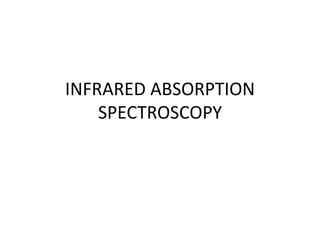Infrared absorption spectroscopy is primarily used for qualitative analysis by measuring molecular vibrational transitions within the infrared region. It includes techniques for analyzing organic materials, polyatomic inorganic molecules, and organometallic compounds, and produces spectra unique to each chemical species, referred to as 'fingerprints.' The document details the principles, instrumentation, and interpretation of infrared spectra, along with methods for sample preparation and specific absorption characteristics for various functional groups.



































































































